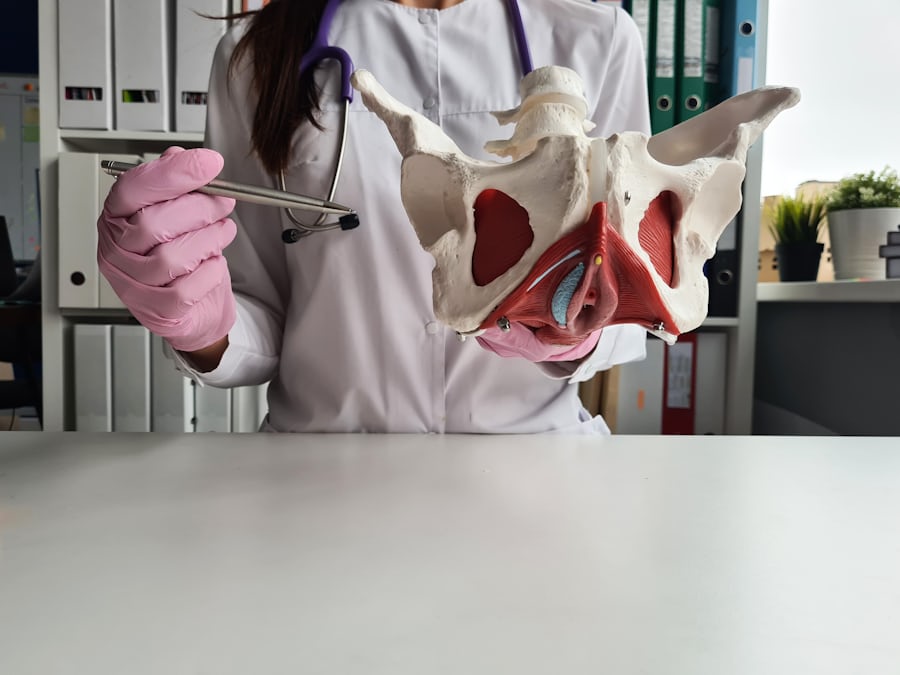Chronic Pelvic Pain Syndrome: A Persistent and Complex Condition
Chronic Pelvic Pain Syndrome (CPPS) is a persistent and often debilitating condition characterized by pain in the pelvic region lasting for six months or more. It can affect both men and women, presenting a significant diagnostic and therapeutic challenge for healthcare providers. The pain is not always associated with a clear underlying disease, and its intensity can range from a mild, dull ache to severe, incapacitating pain that disrupts daily life, work, and sleep.
Symptoms and Presentation
The hallmark of CPPS is persistent pain anywhere in the pelvic area, including the lower abdomen, genitals, perineum, and lower back. The nature of the pain can vary widely among individuals and may be described as:
Dull and aching: A constant, nagging discomfort.
Sharp and stabbing: Intermittent, intense jolts of pain.
Burning or tingling: A neuropathic quality to the pain.
Pressure or heaviness: A sensation of weight in the pelvis.
Pain may be exacerbated by certain activities such as prolonged sitting, urination, bowel movements, or sexual intercourse. In women, the pain may fluctuate with the menstrual cycle.
Beyond pain, individuals with CPPS may experience a range of other symptoms, including:
Urinary symptoms: Increased frequency, urgency, pain during urination (dysuria), or a feeling of incomplete bladder emptying.
Bowel symptoms: Irritable bowel syndrome (IBS)-like symptoms such as bloating, constipation, or diarrhea.
Sexual dysfunction: Pain during or after intercourse (dyspareunia), erectile dysfunction in men, or decreased libido.
Musculoskeletal issues: Muscle spasms or trigger points in the pelvic floor, hips, or lower back.
Fatigue and psychological distress: The chronic nature of the pain can lead to fatigue, anxiety, depression, and a reduced quality of life.
Understanding the Causes
The etiology of CPPS is often multifactorial and not fully understood. In many cases, a single, definitive cause cannot be identified. Instead, it is believed to result from a complex interplay of various factors, which can be broadly categorized as:
Gynecological (in women): Conditions such as endometriosis, adenomyosis, pelvic inflammatory disease (PID), uterine fibroids, and ovarian cysts can be significant contributors.
Urological: Interstitial cystitis/bladder pain syndrome (IC/BPS), chronic nonbacterial prostatitis (in men), and urethral syndrome are common urological factors.
Gastrointestinal: Irritable bowel syndrome (IBS) and chronic constipation can cause or exacerbate pelvic pain.
Musculoskeletal: Dysfunction of the pelvic floor muscles, including tension, spasms, or weakness, is a frequent finding. Myofascial pain syndrome, where pressure on sensitive points in muscles (trigger points) causes pain in seemingly unrelated parts of the body, can also play a role.
Neurological: Nerve entrapment or irritation in the pelvic region, such as pudendal neuralgia, can lead to chronic pain. Central sensitization, a condition where the nervous system becomes hypersensitive and perceives even non-painful stimuli as painful, is also thought to be a key mechanism.
Psychological: Past trauma, chronic stress, anxiety, and depression can contribute to the development and persistence of chronic pain.
Diagnosis and Evaluation
Diagnosing CPPS involves a comprehensive and often lengthy process aimed at ruling out other specific conditions and identifying contributing factors. A thorough evaluation typically includes:
Detailed Medical History: A healthcare provider will ask about the location, nature, and triggers of the pain, as well as any associated urinary, bowel, or sexual symptoms. A history of surgeries, infections, or trauma will also be reviewed.
Physical Examination: This includes a general examination and a specific pelvic examination to assess for tenderness, muscle tension, and abnormalities in the pelvic organs.
Laboratory Tests: Urine and blood tests may be performed to check for infection or other underlying medical conditions.
Imaging Studies: Ultrasound, MRI, or CT scans may be used to visualize the pelvic organs and rule out structural abnormalities.
Laparoscopy: In some cases, a minimally invasive surgical procedure called laparoscopy may be recommended to directly visualize the pelvic organs and identify conditions like endometriosis or adhesions.
Specialized Testing: Depending on the suspected cause, further tests such as cystoscopy (to examine the bladder) or colonoscopy (to examine the colon) may be necessary.
A Multidisciplinary Approach to Treatment
There is no one-size-fits-all treatment for CPPS. Management is often multifaceted and tailored to the individual’s specific symptoms and contributing factors. A multidisciplinary approach involving various healthcare professionals is often the most effective. Treatment strategies may include:
Medications:
Pain relievers: Over-the-counter or prescription pain medications may be used for symptom management.
Anti-inflammatory drugs: Nonsteroidal anti-inflammatory drugs (NSAIDs) can help reduce inflammation.
Muscle relaxants: To alleviate pelvic floor muscle spasms.
Neuropathic pain medications: Drugs like certain antidepressants or anticonvulsants can be effective for nerve-related pain.
Hormonal therapies: For women whose pain is linked to their menstrual cycle.
Physical Therapy: Pelvic floor physical therapy is a cornerstone of treatment and can include techniques like manual therapy to release trigger points, biofeedback to improve muscle control, and exercises to stretch and strengthen the pelvic floor muscles.
Nerve Blocks: Injections of local anesthetics or other medications can help to block pain signals from specific nerves.
Lifestyle Modifications:
Dietary changes: Avoiding foods that trigger bladder or bowel symptoms can be beneficial.
Stress management: Techniques such as mindfulness, meditation, and yoga can help manage the psychological distress associated with chronic pain.
Exercise: Gentle exercise can improve blood flow, reduce stress, and improve overall well-being.
Psychological Support: Counseling or cognitive-behavioral therapy (CBT) can help individuals develop coping strategies for managing chronic pain and addressing any underlying psychological factors.
Surgical Interventions: In cases where a specific underlying cause is identified, such as endometriosis or fibroids, surgery may be an option.
Living with Chronic Pelvic Pain Syndrome can be challenging, but with a comprehensive and individualized approach to diagnosis and treatment, many individuals can find significant relief and improve their quality of life. Open communication with a healthcare team and a willingness to explore various therapeutic avenues are key to effectively managing this complex condition.


